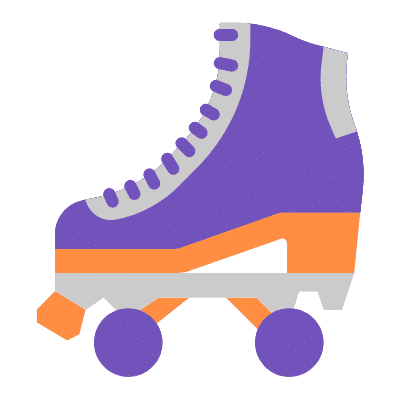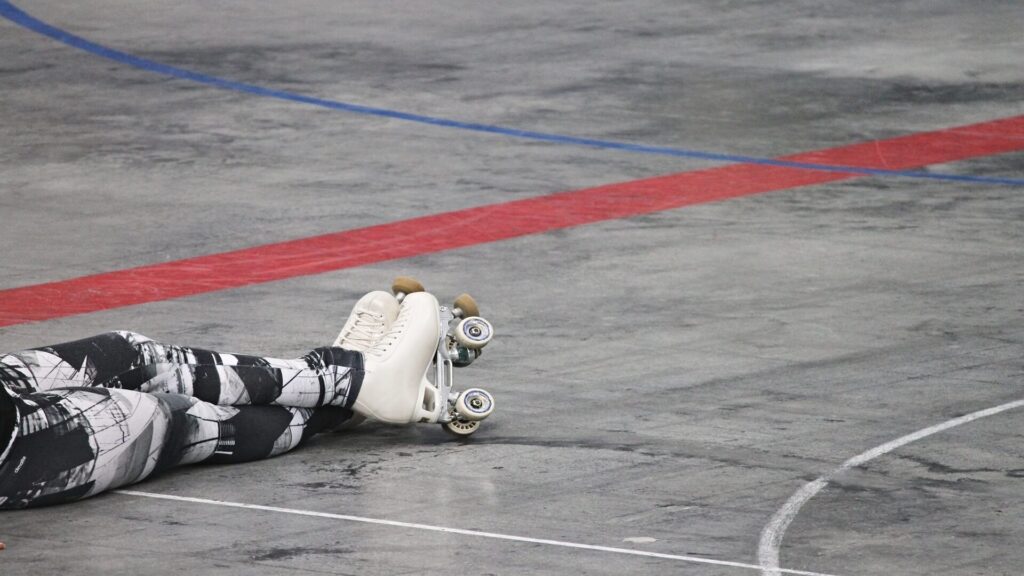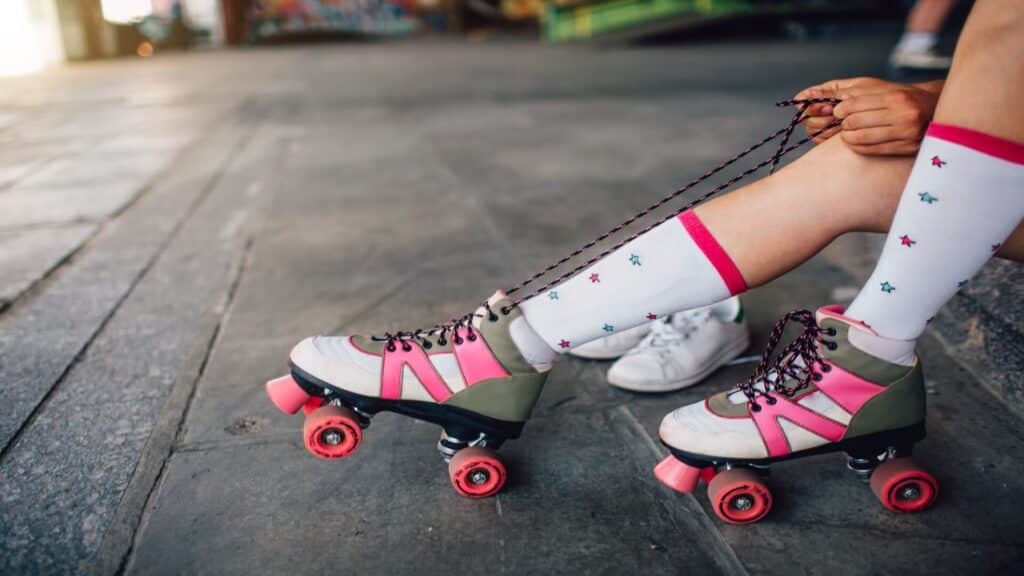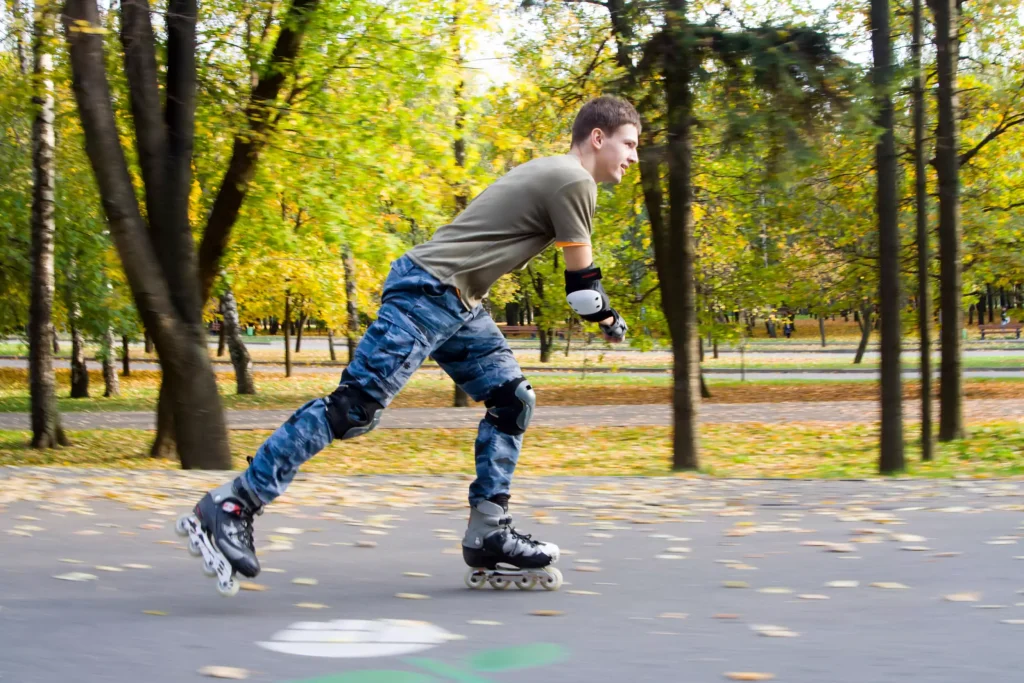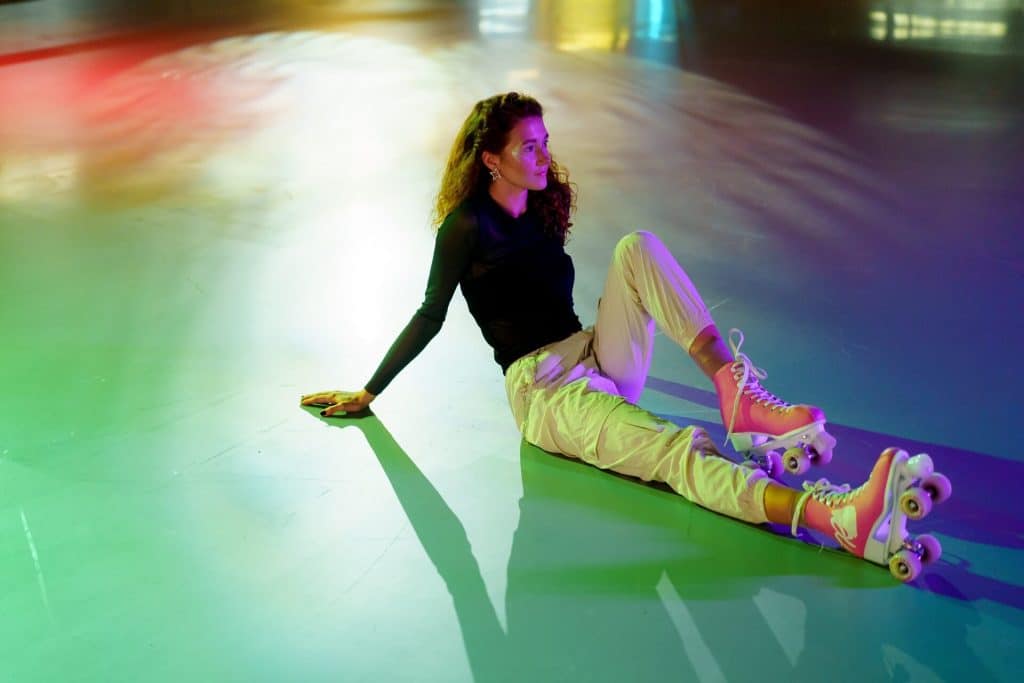Roller skating is a fantastic kind of exercise that, among other things, reduces body fat; it is also a passion, a prospective job, a type of therapy, and a popular cultural activity. Additionally, it is currently promoted on a global scale. This has led to an increase in the number of people skating alone or with friends and family. Everyone can enjoy roller skating because it isn’t all that different for adults compared to children.
If you’re reading this, you’re finally prepared to learn how to get better at roller skating. Perhaps you’re tired of watching your buddies skate by while you wish you could be as good as they are. You can improve your skills and become a professional skater with perseverance and dedication. Here are a few things to do that will help you become better at roller skating.
Table of Contents
Find the Right Posture
Having the right skating stance is crucial for maintaining balance and control while roller skating. Start by standing with your feet shoulder-width apart, knees slightly bent, back straight, and head up. Avoid locking your knees or leaning too far forward or backward. Keep your body weight centered evenly between both feet. Position your arms out to your sides for balance. Practice bending your knees and finding a stance that feels stable and balanced. Having proper form will make learning techniques much easier.
Build your balance
Balance is one of the most important parts of this sport, and it takes a lot of work to do well. There is no better way to learn how to get better at roller skating than working on balancing. Balancing is the key. Here are some drills to improve balance and coordination:
- Stand on one foot with your upper body aligned with your lower body and gradually shift your weight to the other foot. This will help improve balance.
- Try “scootering” by balancing on one skate and using the other to push off and glide. Switch between left and right skates.
- Practice balancing on your toes or heels while stationary. This engages your core muscles.
- Do “duck walks” by keeping your heels together and toes pointed outward. Take small steps to move forward while shifting weight from side to side.
- Hold squatting positions with knees bent to build leg strength.
- Lift one foot off the ground while stationary. Alternate feet and work up to longer durations.
- Do one-legged squats by bending your skating knee and keeping the other leg lifted.
Build Your Confidence
It’s normal to feel a little uneasy when you’re still learning to roller skate. Here are some tips to help build your confidence:
- Use railings, walls, or a spotter to help keep you stable as you find your balance. Holding onto something can ease anxiety.
- Wear protective gear like knee pads, elbow pads, and helmets to allow you to fall safely without injury. Pads help you feel secure.
- Start off slowly, even just standing on skates before trying to roll. Get used to how skates feel.
- Practice first in spaces without many people around to avoid distractions.
- Play fun, upbeat music to bolster your mood and motivation.
- Celebrate small successes like balancing longer or gliding further. Track your progress.
- If you fall, get back up and try again! Don’t let falls deter you.
- Ask a friend to learn alongside you. Having a company can boost confidence.
- Repeat positive affirmations about your abilities. Think “I can do this!”
Learn from others
If you’re looking to improve your roller skating skills, seeking help from more experienced skaters is a great way to go. Getting tips from an instructor or asking for advice from any other skater can help take your game up a notch. Additionally, checking out skating videos online can be a great source of inspiration for creative new moves.
Take lessons
Developing your roller skating skills requires dedication and practice, which a professional instructor can help you with. There are several lesson options to consider:
- Group classes at local skating rinks are a more affordable option to learn basics in a fun group setting.
- Private one-on-one lessons allow for personalized attention and feedback. The instructor can tailor drills and techniques to your specific ability level.
- Online video tutorials are very accessible and allow you to learn at your own pace. Pausing, rewatching, and practicing along with the instructor can be very helpful.
- Enrolling in a multi-week workshop is great for focused skill development over time. Workshops build skills incrementally.
Through personalized feedback and guidance on specific areas of improvement, lessons can help you gain better control and finesse while skating.
This video will show you 10 roller skating drills that will help you to improve your roller skating skills.
Credit to Simon Slays #55 for this tutorial video.
Common Mistakes to Avoid
As you learn to roller skate, be mindful of these common mistakes beginners make so you can avoid developing bad habits:
- Bending at the waist or looking down at your feet rather than keeping your head up. This throws off balance.
- Leaning too far forward or backward rather than centering your weight.
- Locking your knees instead of keeping them slightly bent. This reduces shock absorption.
- Lifting your arms from your sides alters your center of gravity.
- Turning solely with your feet/legs rather than your whole body.
- Sitting back on your heels instead of rolling from the wheels.
- Tensing up your body instead of relaxing your muscles.
By being aware of improper techniques, you can focus on building good roller skating fundamentals from the start. With proper stance, posture, and form, you’ll be well on your way to mastering the roll.
Buy quality skates instead of renting
If you’re ready to commit fully to roller skating, you first need to give up the uncomfortable rental skates and buy your own skate. Renting skates does not accurately represent how your skates feel and look. One of the main reasons people don’t go roller skating all the time is that renting skates is uncomfortable. So avoid all the inconvenience and invest in a good skate boot.
Owning your skates provides a better skating experience. In addition, it also allows you to learn faster compared to using a rental skate. Additionally, having the freedom to exercise wherever and whenever you like is quite convenient! It is the best approach to noticing a change in your skating immediately.
You don’t have to spend a fortune on your first set of skates. You’re ready to start learning how to become an expert roller skater once you find the right skate that fits your style and feet.
If you need help choosing the best roller skates for your needs you should look at our review at this link.
Adequate skating equipment
It is essential to have the proper skating equipment ready before you start, whether you are training at home or in the park. Additionally, younger people cannot skate without a comfortable pair of kids’ roller skating shoes since they have less influence over their balance.
To ensure that the wearer feels comfortable while in full glide, ensure they are neither too loose nor too tight. Protective gear is the next item you should arm yourself with. This comprises elbow pads, helmets, and kneepads. With these protective gears, you can ditch away the thought of injury.
Sample Beginner Routine
When starting out, it’s helpful to have a plan for how often to practice and what to focus on in each session. Here is a sample routine for beginner roller skaters:
First Week:
- Practice 20-30 minutes every other day
- Work on balancing drills like lifting each foot, shifting weight, and one-legged stands
- Hold onto the wall or railing for support as needed
- Focus on finding the proper stance and posture
Second Week:
- Practice 30-45 minutes every other day
- Scooter on one skate and work on gliding on both skates
- Practice easy back-and-forth skating by holding a wall or railing
- Try turning your front foot in a triangle shape to steer
Third Week:
- Practice 45-60 minutes every other day
- Work on balance drills with no support
- Practice wider turns steering with whole body
- Glide longer distances on both feet
- Use toe stops to practice braking
Fourth Week:
- Practice 1 hour every other day
- Build endurance skating longer distances
- Work on picking up speed and gliding
- Try basic crossovers turning the front foot over the back
- Practice braking techniques
Note: Progress at your own pace and customize the routine based on your individual skill level and comfort. Not everyone will advance according to the same timeframe.
Build on your progress
We all aspire to be the skaters who can weave in and out of the beginners clinging on for dear life as they make their way across the road.
But what’s this? Everybody once started as a novice. We all had to learn the fundamentals of balancing, stopping, and even grasping the ready posture before we could start spinning and twirling.
The fundamentals are everything. Continue with the fundamentals and build on your accomplishments as you strive to become more skilled.
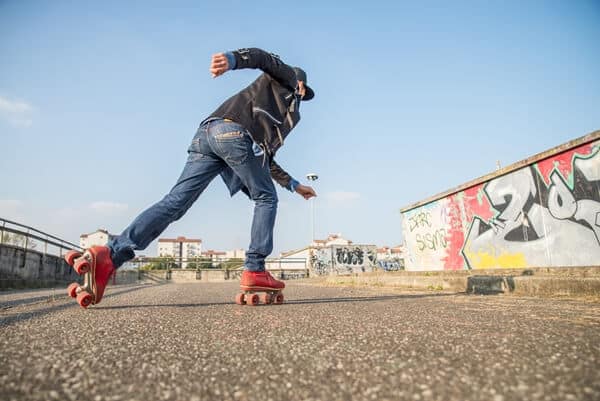
Practice consistently
You cannot learn how to get better at roller skating without staying consistent. You have to practice frequently. Professional skaters invest so much time to become good at skating. You must practice at least twice a week to be a great skater.
You should become used to wearing your skates at least three times a week. In addition, it shouldn’t be less than 30 minutes if you truly want to learn how to skate well. Additionally, you can spend more time skating at your neighborhood rink.
Your entire session doesn’t need to be intensely concentrated. Spend the first 20 minutes working on specific skills, followed by 10 minutes of play and enjoyment of skating.
Get Better At Roller Skating With Our Quick Tips
Here are some quick tips to keep in mind as you practice roller skating:
- Look ahead of you in the direction you want to go rather than down at your feet. This helps with control.
- Relax your body and loosen your muscles rather than tensing up. This will improve balance.
- Push off using your heels for maximum power and stability.
- Keep your knees slightly bent and loose to absorb impact. Avoid locking knees.
- Lean slightly forward from your ankles rather than bending at the waist.
- Maintain proper upright posture with your head over your feet. Don’t bend or look down.
- Rotate your entire body when turning rather than just your feet and legs.
- Extend one foot forward and bend one knee back to brake.
Final words
It’s crucial to keep it enjoyable so that you’ll eagerly lace up each time and practice roller skating’s fundamentals. As you get more relaxed and your muscles adapt to skating, gradually increase the length of your skating sessions. With this trick, you can get better at roller skating while enjoying the process.
Roller skating is more than just a hobby or a sport – it’s a delight. Gliding smoothly, feeling the motion, and mastering new skills brings deep satisfaction. Skating can reduce stress, build lasting memories, and connect you to a vibrant community. With each stride you take, remember the sheer joy that roller skating can bring into your life. That joy will keep you motivated to improve your skills. So push on with passion, have fun, and let the roll lift your spirit!


